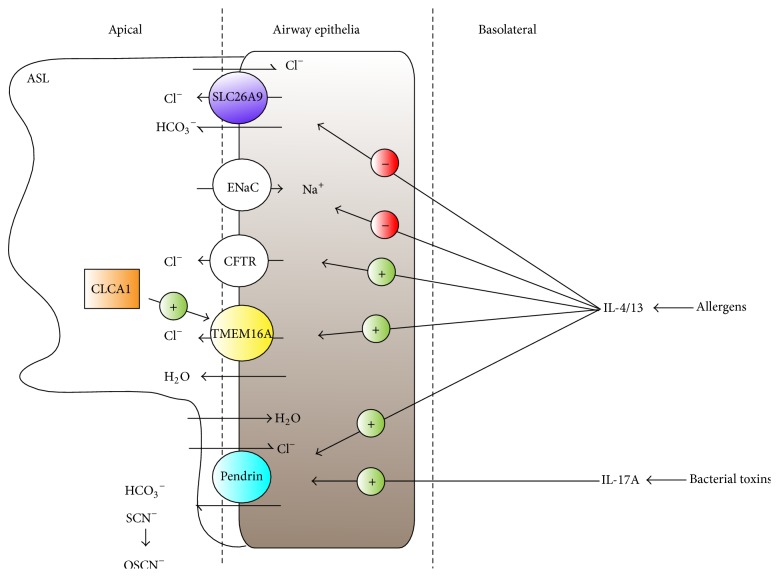Figure 5.
Roles of ion channels in the airway epithelium. In response to allergens and other asthma and COPD exacerbating factors, Th2-cytokines IL-4 and IL-13 induce a water secretory phenotype by stimulating Cl− secretion via CFTR and Ca2+-activated Cl− channels such as TMEM16A and by decreasing Na+ and Cl− reabsorption via ENaC and SLC26A9, respectively, which leads to the thickening of the airway surface liquid (ASL). TMEM16A activity can be increased by secreted CLCA1 protein. In concert, signaling through IL-4/IL-13 increases the functional expression of pendrin, which results in reabsorption of water and thinning of the ASL. Pendrin can also increase the secretion of thiocyanate (SCN−), a substrate for the production of the antimicrobial agent hypothiocyanite (OSCN−) by the lactoperoxidase system. Toxins from B. pertussis and other bacteria trigger an IL-17A-mediated inflammatory host response in the lung epithelium, which is characterized by a significant upregulation of pendrin activity.

